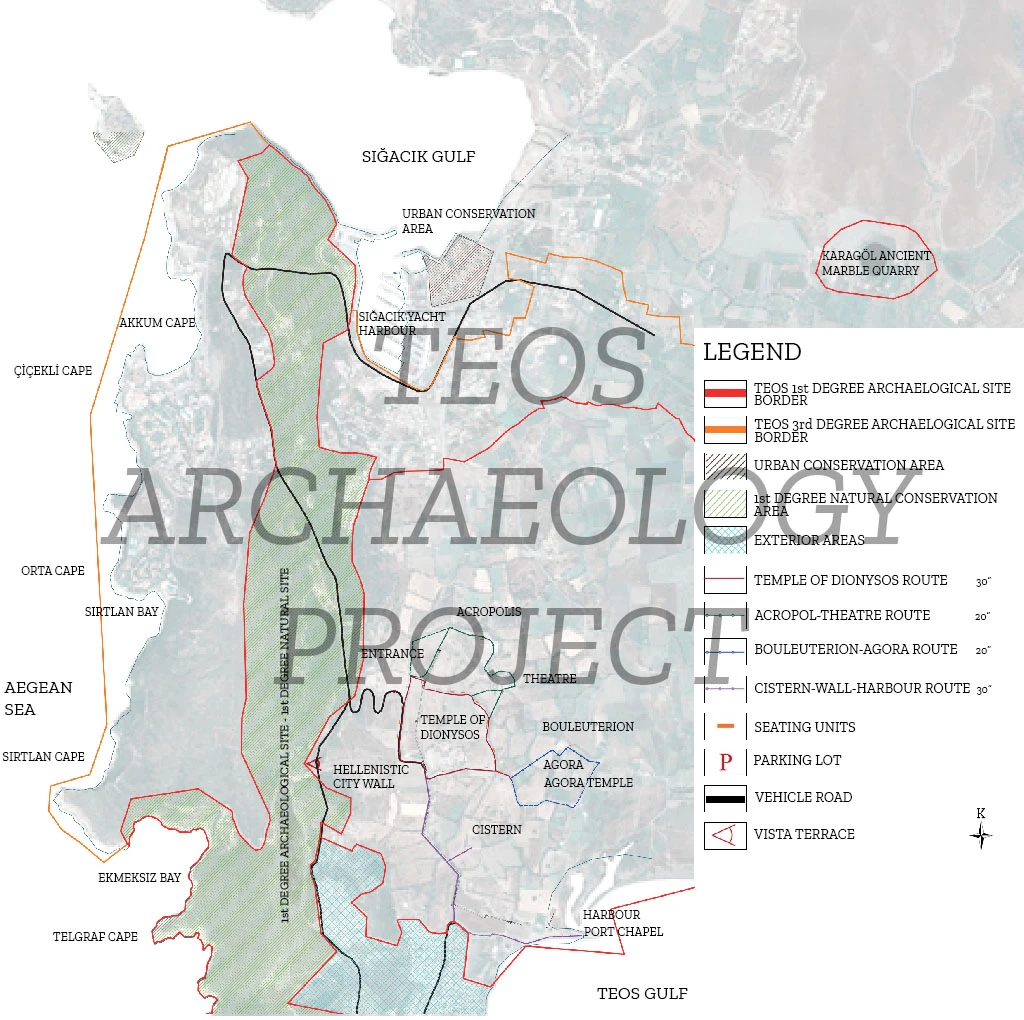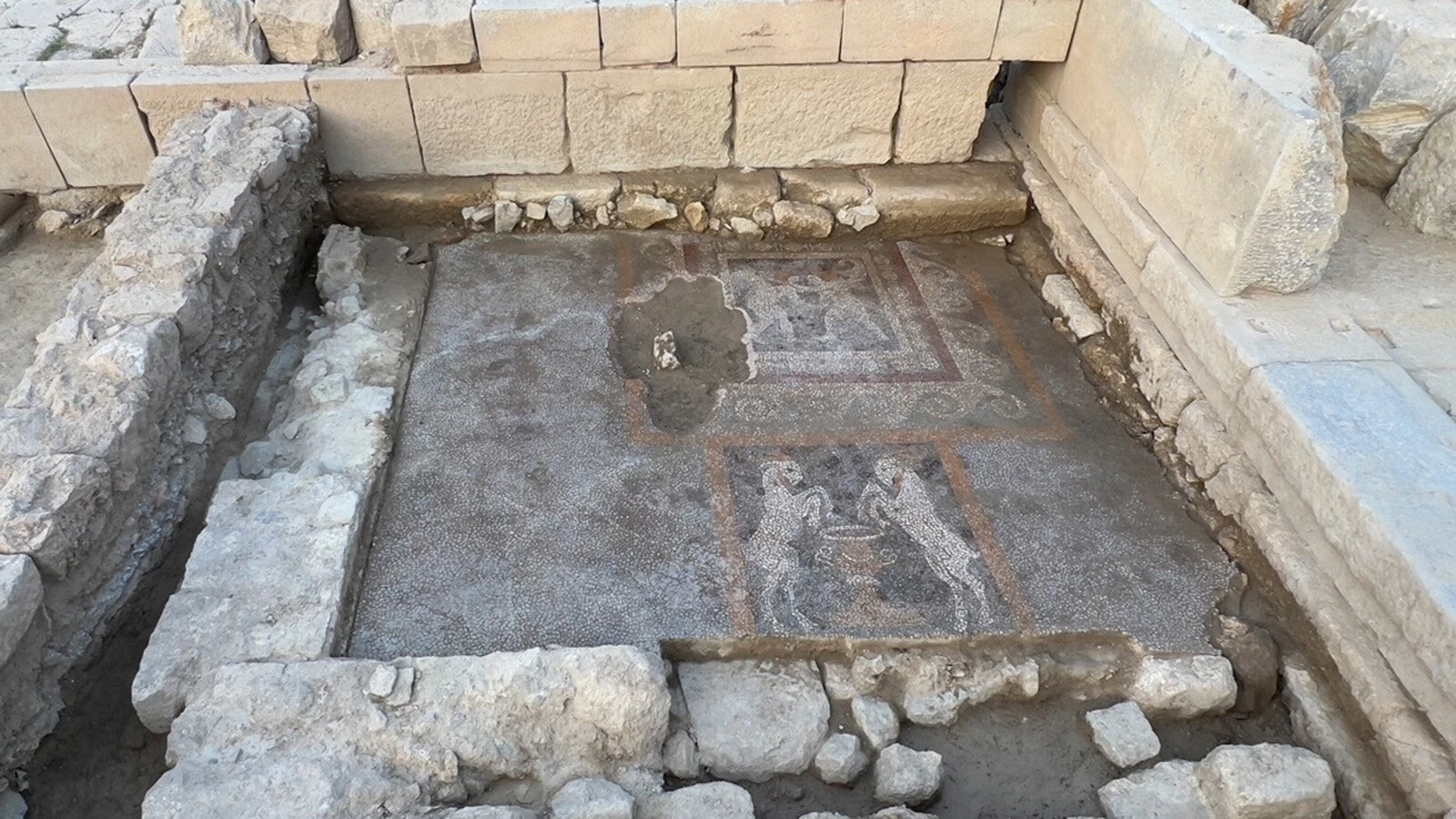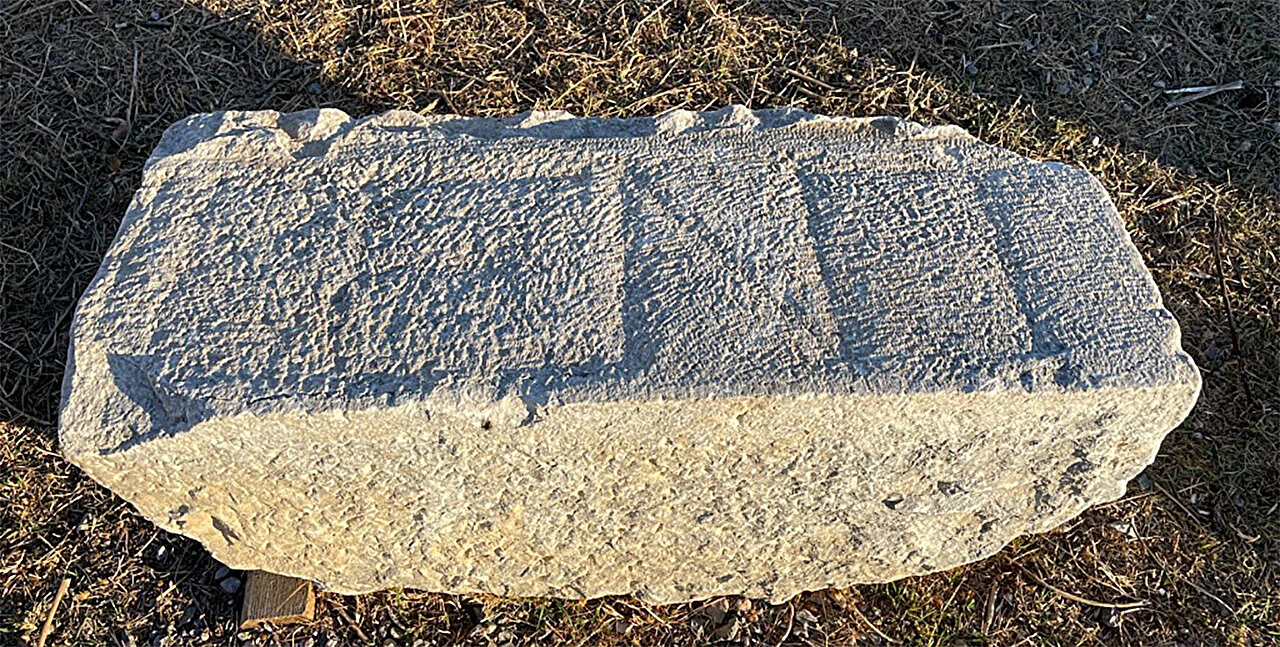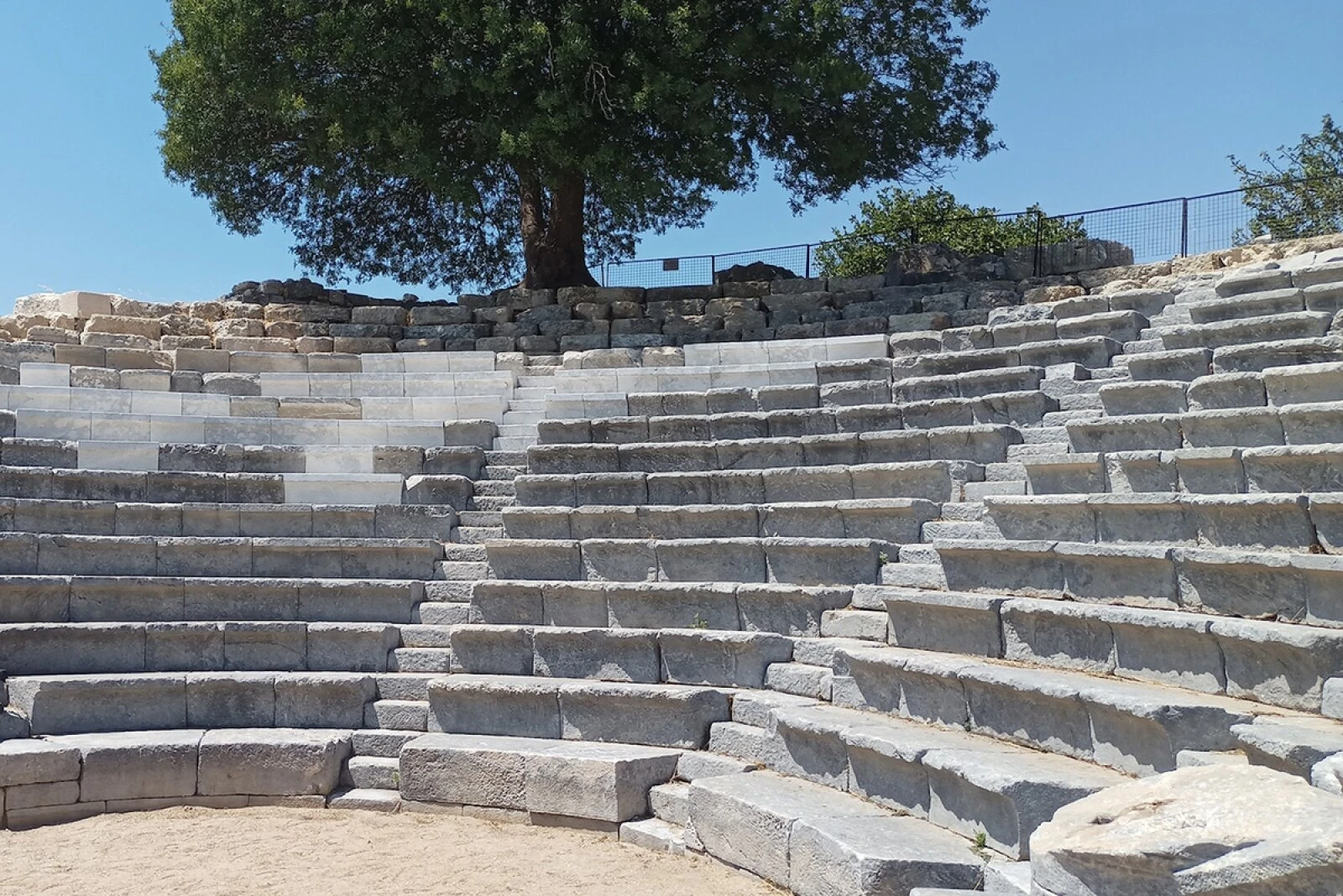Lost history of ancient Greek artists traced in excavations near Izmir, Türkiye
 A mosaic depicting two fighting cupids, associated with Eros and Dionysos, was uncovered in the ancient city of Teos near Izmir, Türkiye, Mar. 7, 2025. (Photo by Teos Archaeological Project)
A mosaic depicting two fighting cupids, associated with Eros and Dionysos, was uncovered in the ancient city of Teos near Izmir, Türkiye, Mar. 7, 2025. (Photo by Teos Archaeological Project)
Archaeologists have uncovered remarkable details about Teos, an ancient Greek city on the western coast of modern-day Türkiye.
The ongoing excavations, led by Mantha Zarmakoupi from the University of Pennsylvania, have focused on the bouleuterion, a city council building that played a crucial role in Teos’ political and social life.
The research is shedding light on the city’s evolution through the Hellenistic and Roman periods and revealing traces of past political conflicts.

Bouleuterion of Teos, transformation from political center to performance venue
The bouleuterion, built in the late third century BCE during the Hellenistic period, served as a center for civic decision-making. It featured a grand eastern facade, two entrances, and tiered seating that accommodated hundreds.
In the Roman period, the structure was repurposed for performances, with the addition of a stage and a three-sided portico, reflecting its changing role in society.
Peter Satterthwaite, a Ph.D. candidate working on the excavation, emphasized its importance. “This building is extremely important for understanding the ancient communities that were living here and their institutions,” he said.

Newly uncovered mosaics, erased inscriptions reveal Teos’ hidden past
Excavations have yielded unexpected discoveries beneath layers of dirt. Archaeologists uncovered at least two mosaics dating back to the third century BCE.
- One depicts two fighting cupids, figures associated with Eros, the Greek god of love
- The imagery connects to Dionysus, the god of wine and the city’s patron deity, whose temple once stood in Teos
- These mosaics provide insight into the artistic and cultural expressions of the city’s residents
In 2021, during the first excavation season, Musa Kadioglu, director of the Teos Archaeological Project, made another significant discovery. While examining fallen architrave blocks, he noticed markings that had been deliberately erased.
The 30-centimeter-high inscription had been removed, likely for political or social reasons. Archaeologists used advanced 3D modeling technology to reconstruct the facade and restore much of the erased text.

Political shifts in Teos, erased history of Dionysian artist guild
The findings suggest that the bouleuterion’s original sponsor may have belonged to the Dionysian artist guild, a group that was once influential in Teos but was later expelled.
This could explain why the inscription was removed, as the city may have sought to erase their contributions from history. The Dionysian artists played a major role in Teos, as the city was known for its cultural and artistic heritage. Their expulsion marks a significant shift in the power dynamics within the city.
“The fact that it’s erased is a clue to another chapter in the city’s history, in which they no longer wanted to commemorate that person or his involvement in the project,” Satterthwaite explained.
Zarmakoupi and her team are now working to reconstruct the final missing portion of the inscription, which likely details what the sponsor funded. Future excavations aim to refine the building’s timeline and confirm the significance of this lost text.
If the erased inscription indeed belonged to the Dionysian artists, it could provide key insight into how cultural shifts influenced political power in Teos.

Excavation challenges, future of Teos as open-air archaeological site
Excavating Teos has not been easy. Researchers have battled extreme heat, with summer temperatures exceeding 100°F.
The team begins work at dawn to avoid the midday sun, spending afternoons cataloging artifacts and analyzing data. Despite these challenges, four seasons of fieldwork have already uncovered crucial details about Teos’ history and its architectural evolution.
The excavation is part of a broader initiative launched in 2010 to preserve and develop the site. The Teos Archaeological Site Landscaping Project aims to transform the area into an open-air museum with visitor facilities, walking paths, and conservation efforts.
While much has been revealed, many mysteries remain. “Every piece of this process has been revealing itself like an onion,” Zarmakoupi said. “It peels off, and another thing arrives.” The ongoing research promises to deepen our understanding of Teos and its place in the ancient world.



